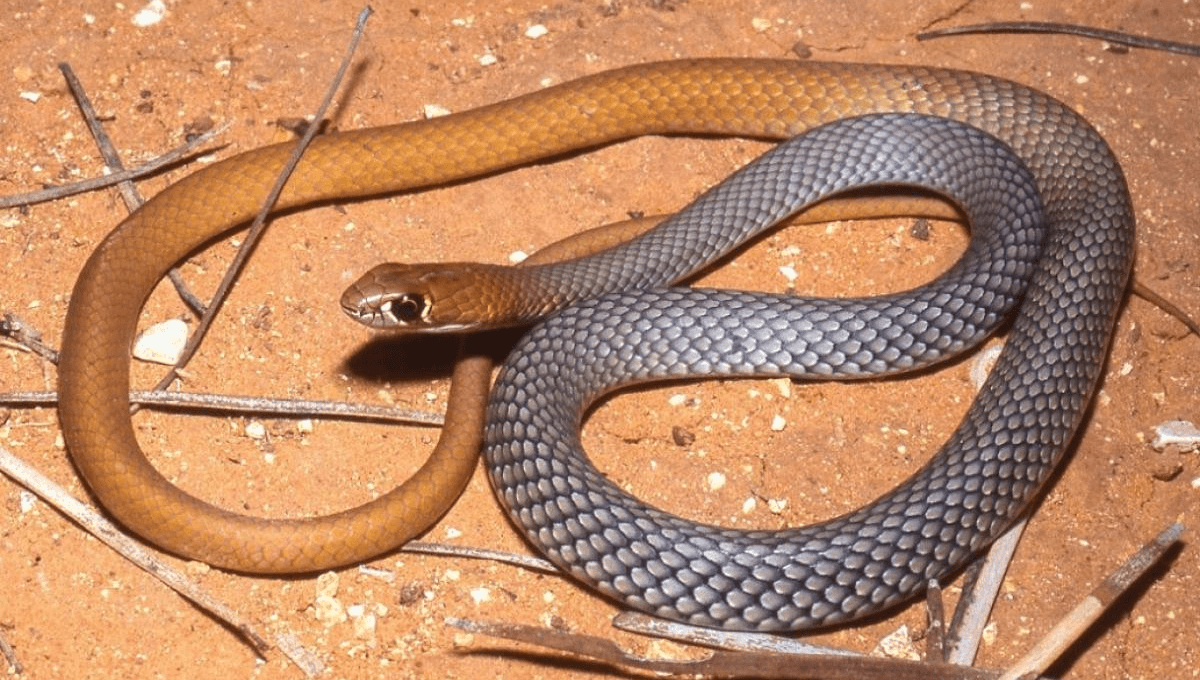
A new venomous whip snake just dropped, although really it is an old one that no one noticed before, mistaking it for familiar species. The desert whip snake (Demansia cyanochasma) has been scientifically distinguished from other whip snakes for the first time. If you’re thinking this is another reason to never visit Australia, or at least its deserts, note that the bite is painful to humans but only deadly to its prey, which are mostly lizards.
Venomous snakes are kind of Australia’s thing. It’s something of a myth that nine of the ten most deadly species inhabit the continent, but there’s no question the diverse and shifting climates have made niches for a lot of members of the Squamata order. Australia has more reptile species than anywhere else on Earth, and most have found some sort of venom a useful tool in the armory, either to subdue their prey or to ward off threats.
The whip snake genus, scientifically known as Demansia, aren’t very famous, but they are the most diverse of Australia’s land elapids – the family that includes most venomous snakes. The number of Demansia species was not recognized for most of the time since colonization, but around 20 years ago herpetologists realized that what they had thought was just a few species was actually many.
Although the genus was expanded to 14 at that time, debate has continued about whether two of the snakes defined at the time are real species, or subspecies of others. James Nankivell of the University of Adelaide led a team who decided to, in their words, “whip the genus into shape” by combining genetic testing with more traditional methods.
They’ve redescribed two existing species, D. psammophis and D. reticulata, to better match the genetic data, and in the process discovered D. cyanochasma is genetically quite distinct from other whip snakes.
Newly discovered species are usually rare, and often endangered, but D. cyanochasma is quite widespread and reasonably common. Nankivell told IFLScience it has been missed until now partly because it lives in such sparsely populated areas of Australia, but also because it is so hard to distinguish by sight. “Some D. reticulata have copper heads and tails like cyanochasma,” Nankivell said. “It turns out that’s just an adaptive trait in a reddish landscape.”
Among some snake families, closely related species can be differentiated by their numbers of scales, but Nankivell said “whip snakes are quite conservative” in that regard.
To tell D. cyanochasma from some of its relatives by sight you need to look for the degree of black margins on the scales or colors around the eyes. Few people like to get close enough to a venomous snake to do that, and these make it hard even if you try. D cyanochasma is very fast and, according to Nankivell, “use their speed as their primary defense.” They prefer to escape rather than attack anything larger than them.
While little is known about D. cyanochasma’s venom, its relatives are known to be painful rather than dangerous. Nankivell attributes this both to small volumes of venom and the toxins having evolved to target reptiles over mammals.
Nankivell thinks prey may also explain Demansia’s diversity. With Australia having so many lizard species the snakes can specialize, with up to six or seven species of whip snakes overlapping in the same territory.
Recently one of Nankivell’s co-authors, Mark Hutchinson, used the same genetic techniques to describe four new species of sand dragons, further emphasizing Australia’s lizard abundance.
The scientific description of the D. cyanochasma is published in Zootaxa.
Source Link: Just What Australia Needed – A New Venomous Snake, And It’s Fast